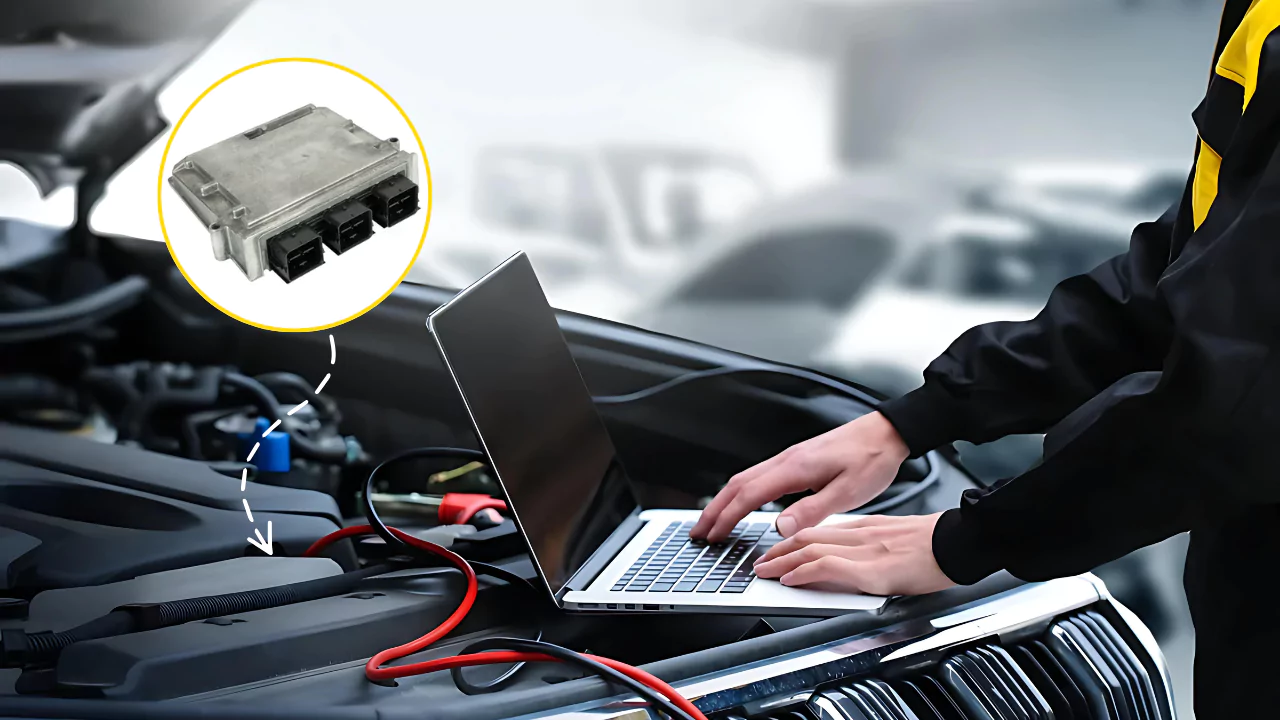In the world of automotive diagnostics and repairs, the code P0595-90605 is something that often causes confusion for vehicle owners and mechanics alike. Understanding what this code means and how to resolve it is crucial for anyone who owns or works with modern vehicles, especially those equipped with advanced engine control systems.
In this article, we will break down the P0595-90605 code, explaining its significance, common causes, symptoms, and possible solutions. Whether you’re a professional mechanic or a car owner trying to understand the issues with your vehicle, this guide will provide you with the necessary knowledge to address this code effectively.
What Is P0595-90605?
The P0595-90605 code is a diagnostic trouble code (DTC) related to the engine control unit (ECU) or powertrain control module (PCM) of a vehicle. This code typically appears when the system detects an issue with the coolant thermostat or the coolant thermostat heater circuit. A vehicle’s cooling system plays a crucial role in regulating engine temperature, and any issues within this system can cause significant performance problems.
P0595-90605: Specific Problem
-
P0595: This part of the code refers to a malfunction in the coolant thermostat heater control circuit. The coolant thermostat heater is designed to help the thermostat reach its operating temperature more quickly, which in turn helps the engine to warm up faster.
-
90605: The additional code provides further clarification on the specific malfunction or sub-system that is affected, often related to the thermostat heater circuit.
When the P0595-90605 code appears, it signals that there is a malfunction within the thermostat system or heater circuit that is preventing the thermostat from functioning properly.
Common Symptoms of P0595-90605
Vehicle owners may experience a variety of symptoms when the P0595-90605 code is triggered. Some of the most common symptoms include:
1. Engine Overheating
Since the thermostat is responsible for regulating the engine temperature, a malfunctioning thermostat can cause the engine to overheat. If the thermostat stays open, the engine will struggle to reach the optimal temperature, leading to a potential overheating condition. If the thermostat remains closed, the engine may overheat due to the lack of coolant circulation.
2. Poor Fuel Efficiency
A malfunctioning thermostat can cause poor fuel efficiency. This occurs because the engine may take longer to reach its ideal operating temperature, causing the engine to run inefficiently. As a result, you may notice that your vehicle consumes more fuel than usual.
3. Check Engine Light
The most obvious sign that the P0595-90605 code has been triggered is the illumination of the check engine light. If the vehicle’s computer detects a malfunction with the thermostat or heater circuit, it will trigger the check engine light to alert the driver that an issue needs to be addressed.
4. Heater Malfunction
A faulty thermostat heater can also affect your vehicle’s heater system. If the heater circuit is not functioning properly, it may result in an inadequate heating system, making it difficult to regulate the cabin temperature, especially during colder weather.
Causes of P0595-90605
There are several reasons why the P0595-90605 code might be triggered. Identifying the exact cause is essential for proper diagnosis and repair. The most common causes include:
1. Faulty Thermostat Heater
The thermostat heater is designed to help the thermostat reach operating temperature quickly. If the heater element is damaged, it may not allow the thermostat to function correctly, leading to a delay in engine temperature regulation.
2. Wiring or Connection Issues
If the wires connected to the thermostat heater circuit become damaged, corroded, or disconnected, the thermostat may fail to receive the necessary power to operate. This could trigger the P0595-90605 code and cause the vehicle to experience performance issues.
3. Faulty Thermostat
Sometimes, the thermostat itself can be the root cause of the problem. If the thermostat fails to open or close as required, it can prevent the engine from reaching the correct temperature. In this case, the P0595-90605 code may indicate that the thermostat is malfunctioning.
4. PCM/ECU Issues
In some cases, the issue might lie with the Powertrain Control Module (PCM) or Engine Control Unit (ECU). If there is a software or hardware malfunction in these systems, it could trigger the P0595-90605 code, even if the thermostat or heater itself is functioning correctly.
5. Failed Heater Relay
The heater relay is responsible for controlling the power supply to the thermostat heater. If the relay fails, it can prevent the heater from reaching its operating temperature, causing the engine to run inefficiently.
How to Diagnose P0595-90605
Diagnosing the P0595-90605 code requires a methodical approach to pinpoint the exact issue. Here’s a step-by-step guide to help with the diagnosis:
1. Scan the OBD-II System
The first step in diagnosing any DTC is to use an OBD-II scanner to read the trouble code. This will confirm that P0595-90605 is the issue, and it will provide additional information that can help narrow down the cause.
2. Inspect the Thermostat and Heater Circuit
Next, inspect the thermostat and the heater circuit. Look for any signs of damage, such as corrosion, worn wires, or physical damage to the thermostat. If the thermostat is physically damaged, it may need to be replaced.
3. Check the Thermostat Heater Relay
If the thermostat and heater circuit appear to be in good condition, the next step is to test the heater relay. A faulty relay can prevent the heater from functioning properly, so checking the relay’s operation is crucial.
4. Perform Voltage Tests
Use a voltmeter to test the voltage at the thermostat heater. This will help determine if the heater is receiving the necessary power. If there is no voltage, the issue may lie in the wiring or relay.
5. Inspect the PCM/ECU
In rare cases, the issue may be with the PCM/ECU itself. If all other components are working properly and the code persists, you may need to have the PCM/ECU tested or reflashed.
How to Fix P0595-90605
Once the issue has been identified, you can take the following steps to fix the problem:
1. Replace the Thermostat Heater
If the thermostat heater is faulty, replacing it is often the simplest and most effective solution. Ensure that the replacement part is compatible with your vehicle’s make and model.
2. Repair or Replace Wires
If damaged wiring is found in the thermostat heater circuit, it should be repaired or replaced. Make sure that the new wiring is properly insulated to prevent future issues.
3. Replace the Thermostat
If the thermostat is malfunctioning and causing the issue, replacing it is the best solution. Be sure to use a high-quality replacement part to ensure the proper functioning of the cooling system.
4. Replace the Heater Relay
If the heater relay is found to be faulty, it will need to be replaced. Relays are generally inexpensive and can be easily swapped out with a new one.
5. Reprogram the PCM/ECU
If the issue lies within the PCM or ECU, you may need to have the system reprogrammed or replaced. In some cases, updating the software may resolve the problem.
Preventing Future Issues with P0595-90605
To prevent issues with the P0595-90605 code in the future, follow these tips:
-
Regular Maintenance: Ensure that your vehicle undergoes regular maintenance, including thermostat checks and coolant system inspections.
-
Monitor for Symptoms: Keep an eye out for symptoms such as engine overheating or poor fuel efficiency, as these may indicate issues with the thermostat system.
-
Prompt Repairs: If you notice any unusual behavior in your vehicle’s cooling system, address it promptly to avoid more serious damage.
Conclusion
The P0595-90605 code can be frustrating, but with the right knowledge and approach, it can be effectively diagnosed and repaired. By understanding the symptoms, causes, and solutions for this code, vehicle owners and mechanics can ensure that their engine’s thermostat system functions optimally, keeping the vehicle running smoothly. Regular maintenance and timely repairs are key to preventing future issues and ensuring the longevity of your vehicle.


